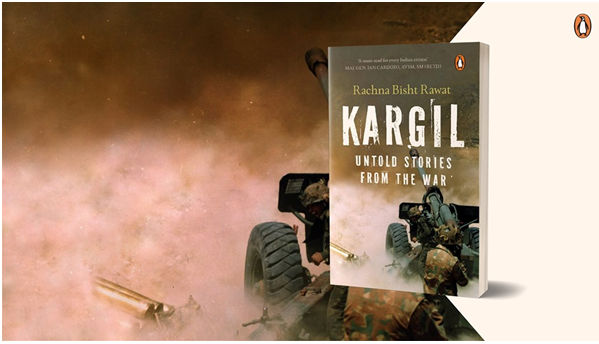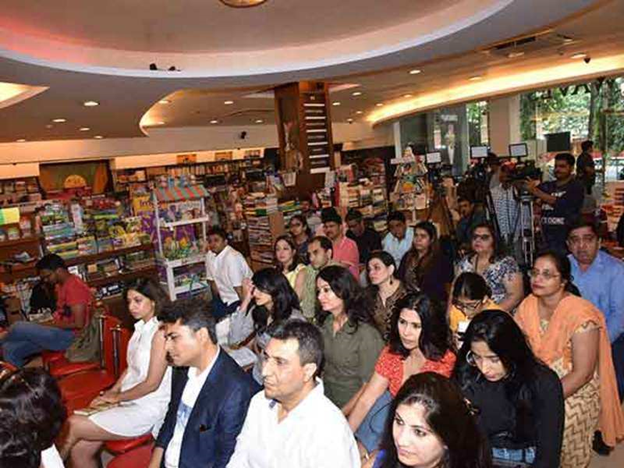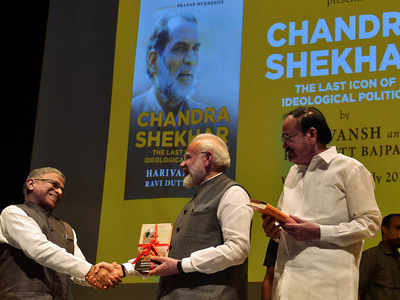The colonial era played a big part in the evolution of the genre. According to Other Tomorrows, a study on the history of science fiction in India by Suparno Banerjee at the Louisiana State University in the US, pre-independence, everything Indian was associated with (mainly Hindu) spiritualism and everything European, connected to science. Hindu nationalists often exploited this divide by extending the religion/science binary as Indian/European binary. Then came the emergence of the reformist Brahmo Samaj, Dayananda Saraswati’s (Arya Samaj) connection of Vedic knowledge (vimanas) with modern science (airplanes), and rationalist movements helmed by leaders like Swami Vivekananda which re-projected science on to the Indian past and presented it as something essentially Indian, as the study points out.
All the variables aside, there is one constant that sticks out in the story of the historical evolution of Indian SFF—it has always been subversive. Be it Kylash Chander Dutt’s 1835 A Journal of Forty-Eight Hours of the Year 1945, which details a fictional uprising against the British colonisers in the future, or J.C. Bose’s Niruddesher Kahini, which speaks about the “heart of British empire”, or Begum Hussain’s Sultana’s Dream, a feminist fantasy which envisions a world controlled by women, the genre has always retained a sense of defiance and rebellion against the status quo. Even Khatri’s works, though outwardly very sanitised, had provoked a huge debate in its time. Khatri wrote in clear, readable Hindi that made ample use of common Arabic and Persian words. It was those days of institutionalisation of Sanskritised Hindi, preferred by the literary elite. Khatri’s style, in spite of its huge popularity, was then not deserved to be considered literary Hindi, but rather only merited the designation “Hindustani”, a vehicle fit merely for light and frothy creations and too close to Urdu to be respectable, according to the study Culture and Power in Banaras published by UC Press.
Keeping the great traditions to one side, what is the genre’s standing in India currently? There is obviously a growing culture of SFF, driven by readers, writers and publishers, but is it enough? According to Salik Shah, editor of Mithila Review, an internationally renowned SFF journal published out of India that celebrated its sixth anniversary this year, Indian SFF is making great strides forward and he expects a significant shift in the literary scenario in five years. But, on the flip side, he says, finances were so difficult that keeping the magazine alive was a statement in itself. Mithila Review stands alone as an India-based publication in a global stage of renowned journals like Clarkesworld, Analog, Asimov’s, SF&F, Strange Horizons, Lightspeed, Fantasy magazine and more.
“We started with this quest for ‘freedom, dignity and justice’ at a time when there was a crackdown on students and abuse of state power,” says Shah. Mithila Review, according to him, is a global publication attempting to decentre science fiction in an Anglo-centric, Euro-centric milieu. “There is no such thing as a singular Indian or national identity anymore. Everything has become so globalised. Every person has his own journey, and Mithila Review is a reflection of my own journey and struggles as a citizen of this new world.”
But, what does it mean to decentre the genre from the west? In the global publishing world, the western readership—once all-important—is now a growingly small fraction in the market, says Mondal. “In China there are bestselling speculative fiction authors who write in Mandarin and have the size of readership larger than writers in English without even being translated. So, whose future are we talking about? The world minus the Mandarin readership? If we’re asking to decentre the literary canon from the west, we also need to ask why we still need to use the west as the anchor to measure how far that de-centring has succeeded,” Mondal said.
The Indian publishing industry is also growingly bullish on SFF, says Menon, who has a collection of short stories coming out next year. “Numerous publishing houses are interested in SFF,” he says. “Editors are also actively seeking out original works.”
For the writers, the existing scenario poses unique opportunities, and also raise challenges. Author Samit Basu calls publishing a novel during the pandemic a “deeply strange experience”. His novel Chosen Spirits, which came out in April, describes a deeply dystopian Delhi set 10 years into the future, replaced with augmented realities, mass technological surveillance, “reality controllers” and the sparks of a resistance with references to Shaheen Bagh protests. “A lot of the things I had predicted would happen over the next decade actually started happening during the course of writing the book,” he said. “I don’t think I’ve ever rewritten a novel anywhere near as often as I had to with Chosen Spirits, and part of pushing the publishers to release the book mid-pandemic was the worry that the world would change so much over the course of any week that the book would seem not to be futuristic at all if we held it back waiting for some kind of normality to return.”
The technological acceleration spurred on by the pandemic is as unmistakable as the economic divides that it brought into contrast. Globally, according to a study conducted by the University of Miami, we are now “living through an industrial revolution, with computing at the core of it”. On the flip side, extended global lockdowns have dragged many poor countries back several decades, with child starvation and poverty emerging as two of the biggest concerns.
The current global churn is, to borrow obliquely from J.C. Bose’s short story, something akin to a mixture of water and oil. Deeply uneven, cresting and troughing, accumulating to its absolute threshold at some points and completely hollowed out in others. Like a territory war between the past and the present, warping the laws of nature that all of us take for granted.
Frontlist | A meteorological mystery about the disappeared cyclone
Frontlist | A meteorological mystery about the disappeared cycloneon Dec 18, 2020

The Wall by Gautam Bhatia, a lawyer and editor of the prestigious Hugo-nominated SFF journal Strange Horizons, was released in August. The novel is set in an imaginary city of Sumer, isolated behind gigantic, impassable walls that have been a fixture for whole generations. The novel delves into the conflict between Shoortans, powerful priests set on maintaining the status quo and preserving the wall, and Tarafians, a group of rebellious youngsters dead set on crossing over to the other side. “I had no particular political motif in mind, but an exploration of the meaning of freedom,” says Bhatia.
Tashan Mehta’s 2017 The Liar’s Weave tells the story of a Parsi family in 1920s colonial Bombay, a boy who was born without a birth chart; in his life, unmapped by the stars, every lie becomes a reality.
Prayaag Akbar’s Leila, since adapted into a Netflix series, speaks of a mother’s search for a missing daughter in a highly segregated, repressed society where purity is held up as a high ideal and mixed faith/background kids are kidnapped and taken to rehabilitation centres.
Indrapramit Das’s The Devourers switches between modern Kolkata and Mughal India for an unsettling tale of werewolves in Shah Jahan’s kingdom, with sprinklings of Norse mythology, and is replete with graphic examinations of violence and bittersweet explorations of love’s different realms.
Anil Menon’s 2016 Half of What I Say yanks at the threads of the suspicious death of a politician and the existence of a powerful, dubious governmental anti-corruption department in Lokshakti, and pulls you into a maze of characters and political intrigue that hits close to home.
In Analog/Virtual, Lavanya Lakshminarayan explores a futuristic Bengaluru—the ‘Apex City’ split in half by the Carnatic Meridian. In this highly segregated world where meritocracy and technarchy are keywords, those outside the Meridian are considered outcasts—the ‘Analogs’ are afforded none of the technological comforts like climate shields and clean water that their ‘Virtual’ contemporaries have access to. “I wanted to explore the transition of the city of Bengaluru over the years—its growth as a technological hub, and the dichotomies and the inequalities that are laid bare outside of the bubble we are living in,” says Lavanya.
Worldbuilding—creating a cogent universe (imaginary or otherwise) with no internal contradictions, with a focus on sustaining physical laws and social systems—is a crucial part of the SFF writing process. It is also one that allows the writers to see past the redundancies and internal contradictions of the ever-present normative social influence. In The Wall, relations and marriage are strictly controlled on the divisions of class. In an attempt to control over-population in a bounded society with resource restrictions, same-sex relationships are encouraged and called “pure love”. Says Bhatia: “If you have a closed world, what would be the functions of gender roles and the significance of sexual orientations? What we see in our current society (homophobia or patriarchy) are prejudices grounded in material circumstances.”
US-based Mimi Mondal, one of the best known Indian SFF writers, says all choices in the worldbuilding process are deliberate. “What interests me the most about fictional worlds is their economy, which eventually leads to the question of sources of power. What are the power centres in this world? What are the limitations, both in the sense of the physics of the world, and the individual capacity of a character? I work my way through these questions first, and the individual storylines of the characters emerge in response to them,” says Mondal, whose works have been shortlisted for both the Hugo and Nebula awards.
This segues into the knottiest question of them all: What constitutes ‘Indian SFF’? Like Afrofuturism or Silk Punk (as author Ken Liu defines it, fantasy that takes “inspiration from classical East Asian antiquity”), can there be a separate label for speculative fiction drawing from the Indian subcontinent? Would the defining boundaries of that sub-genre be geographical? Cultural? Where would that leave the diaspora writings and those by foreign authors?
In India, one of the earliest SFF works was the Hindi epic fantasy novel Chandrakanta by Devaki Nandan Khatri, published in 1888; with its roster of queens, empires, magicians and royal intrigues, its TV series adaptation became one of the most popular shows for a generation. In 1905 came Sultana’s Dream by Begum Sakhawat Hussain, one of the first works in English. Post-Independence, a slew of works appeared in Bengali (Satyajit Ray’s supernatural Professor Shonku being one example), Urdu and Hindi, with notable English language works like Amitav Ghosh’s The Calcutta Chromosome—a medical thriller spanning continents—in 1995, Samit Basu’s Gameworld Trilogy, Anil Menon’s The Beast With Nine Billion Feet in 2009, and more.
“India does not have a classic example of culture-specific literature like Manga in Japan,” says Menon. “There is no such conceptual entity. It mostly comes down to Indian writers. We still don’t have a sense of what interests us as Indians. I could say writings by authors of Indian origin would classify as Indian SFF.”
But where does that leave authors like British-origin Ian McDonald, whose 2004 science fiction work River of Gods describes a futuristic India, with ancient traditions and cutting-edge future tech, and divided into a number of clashing federations. Works by foreign writers have often been criticised for commercial exoticisation and single-dimensional portrayals of a complex landscape. Says Menon: “When I was at Clarion West Workshop [a renowned six-week workshop for aspiring writers at UC San Diego], we would be given [blind] descriptions by Indian, Indian-origin and foreign authors on a topic like [say] the Manikarnika ghats. We would be asked to identify who wrote what. Based on the way the scenario is described, we could almost always identify [foreign writings].”
Like almost everything else in and of India, SFF from the country is polyphonic, with historic regional and linguistic factors playing their part. Even pre-independence, science fiction grew in Bengali, Marathi (promoted by the world-renowned astrophysicist and Padma Vibhushan awardee Jayant V. Narlikar) and Hindi. Contrast that with the deep south. Malayalam has next to zero instances of such a tradition; instead, its SFF is deeply influenced by the magical realism that gripped Latin America. One of the reasons for that, as Menon mentioned in an interview with author Vandana Singh, could be the fact that Kerala was relatively unaffected by the British colonial presence.
Frontlist Book News
Frontlist Latest news
Google news
Indian publishing industry
Indian Publishing Industry News Frontlist
Indian Publishing News Frontlist
Kuntalin Purashkar
Niruddesher Kahini
River Of God
SFF
Speculative Fiction and Fantasy



.jpg)






.jpg)

.jpg)
.jpg)
.jpg)
.jpg)
.jpg)
.jpg)

.jpg)








Sorry! No comment found for this post.